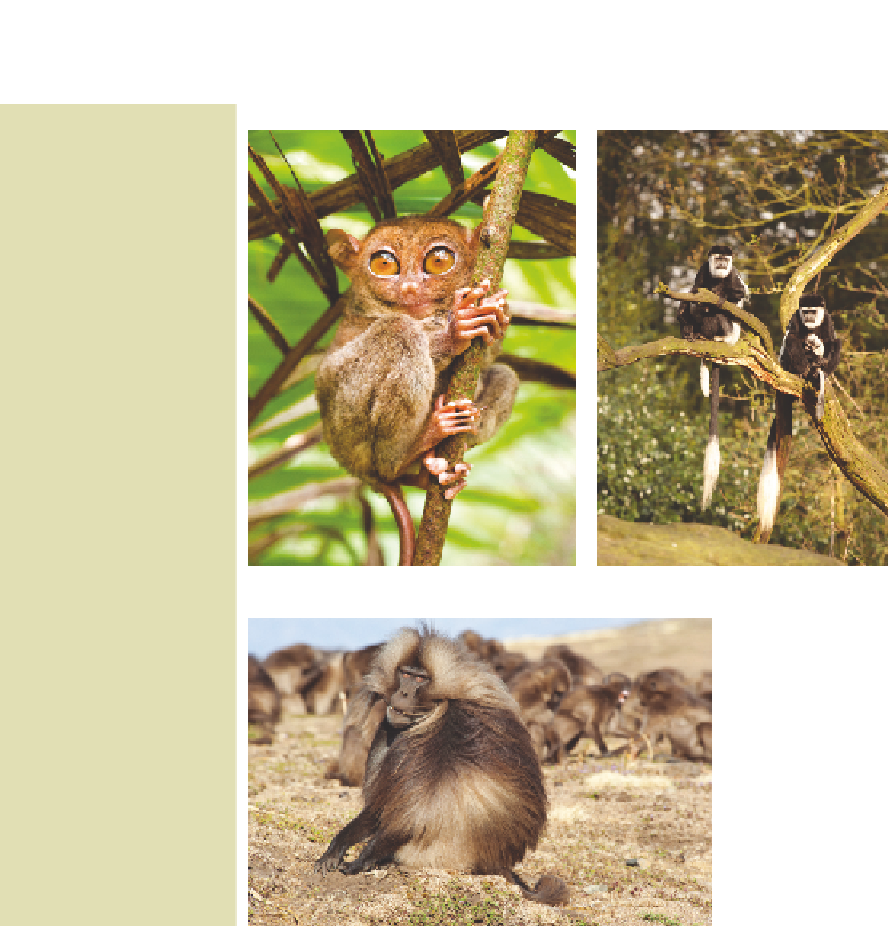Biology Reference
In-Depth Information
(a)
(b)
Fig. 2.4
Differences in
social organization
in primates.
(a) A solitary
insectivorous
tarsier. Photo ©
iStockphoto.com/
Holger Mette. (b)
A small group of
black and white
colobus monkeys,
which eat leaves in
the forest. Photo ©
iStockphoto.com/
Henk Bentlage. (c)
A large group of
gelada baboons,
which feed on the
ground on grass
leaves and roots.
Photo ©
iStockphoto.com/
Guenter Guni.
(c)
ecological variables on each trait. Thirdly, they used different genera as independent data
points for analysis, rather than species, to reduce the problem of similarity through
common ancestry. Some examples are now discussed to illustrate their approach.
Home range size
Larger animals need to eat more food and so, in general, we would expect them to have
larger home ranges. Therefore, if we want to examine the influence of an ecological variable,
such as diet, on home range size, we have to control for body weight as a confounding
variable. When home range size is plotted against the total weight of the group that inhabits
it, as expected the larger the group weight the larger the home range (Fig. 2.5).
The influence of diet on home range size can be seen when the specialist feeders
(insectivores, frugivores) are separated from the leaf eaters (folivores); the specialist
feeders have larger home ranges for a given group weight. The probable explanation is
Variation with
diet




























